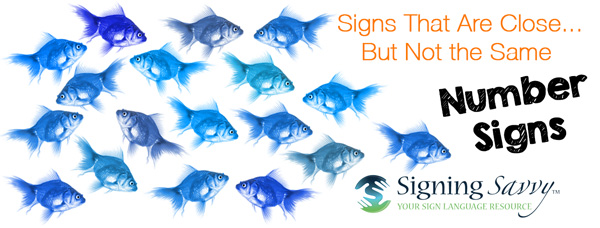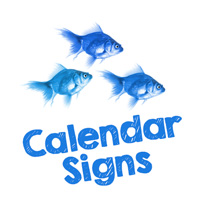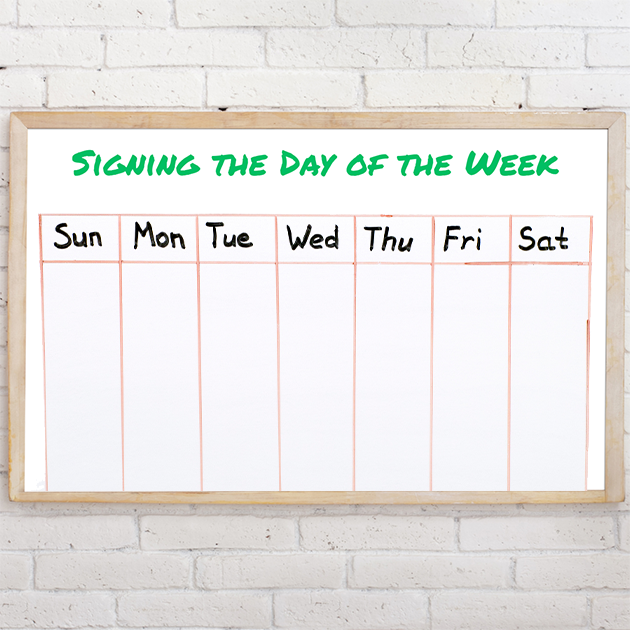
Signs That Are Close... But Not the Same — Numbers
This article is part of our “Signs That Are Close... But Not the Same” series, which highlights signs that look similar, but have different meanings.
The ASL signs shown below look similar, but are not the same. There are many ASL signs that when produced look similar, but in fact have a completely different meaning. Below you will find examples of such signs. Watch closely to see if you can see the differences. In addition, watch my eyebrows, look to see when I tilt my head or lean my body in a certain way, even what my mouth is doing. These nuances are called inflections and trust me, inflections matter.
These examples are all number signs.
1) 3 vs. 6 vs. 9
Signing and remembering the number 3 is often a challenge for new signers since many hearing people in North America were taught from a young age to count the number 3 on their hand the way 6 (and W) is signed. The numbers 3, 6, and 9 are all signed with three fingers extended, adding to the confusion for new signers.
- 3 is signed with the middle finger, index finger, and thumb up. The palm is facing the body when you are counting or signing a quantity of items. The palm faces forward, away from the body, in other applications, such as when you are doing math or keeping score.
- 6 is signed with the index, middle, and ring fingers up, while the thumb and pinky finger touch. The sign faces forward, away from the body.
- 9 is signed with the middle, ring, and pinky fingers up, while the thumb and index finger touch. The sign faces forward, away from the body.
 |
||
2) 6 vs. 7 vs. 8 vs. 9
The handshape for each of the numbers 6 through 9 is similar, but different, so you need to pay close attention to what finger the thumb is touching. New signers may also have a hard time remembering if counting beginning with the number 6 starts with the thumb touching the pinky or touching the index finger. It takes some practice, but the 6 handshape has the thumb and pinky touching and then the thumb moves to the next finger as you count up… the thumb touches the ring finger for 7; the thumb touches the middle finger for 8; and the thumb touches the index finger for 9. Once you can distinguish and remember the signs for 6 through 9, it is helpful when counting later numbers that end in 6 to 9 as well.
 |
||
3) 72 vs. 76
72 and 76 look similar, as do a lot of the numbers that end in 2 and 6, because a 2 can look a lot like a 6 if the ring finger is not fully extended when signing the 6. This can especially happen when signing multiple numbers together and transitioning to the number 6. You will see this happen often in the real world since extending all three center fingers to point up when forming 6 can be a strain on the hand. You just need to look closely and ask for clarification if you are not sure what was signed.
 |
4) Single Digit vs. Teen Numbers: 6 vs. 16; 7 vs. 17; 8 vs. 18; 9 vs. 19
The single digits 6, 7, 8, and 9 look similar to their teen counterparts 16, 17, 18, and 19. The teen numbers 16 to 19 are all compound signs that combine the signs for 10 and the second digit number (6, 7, 8, 9) together. Don’t blink and miss the first part of the sign where the 10 handshape is signed! They start with the 10 handshape and twist into the second digit number, therefore, they end with the same number as their single digit counterpart.
The good thing with the numbers 16 to 19 is they follow a pattern, making it easier to remember how to sign them.
6 vs. 16
 |
7 vs. 17
 |
8 vs. 18
 |
9 vs. 19
 |
5) Double Numbers: 22 vs. 33 vs. 44 vs. 55 vs. 66 vs. 77 vs. 88 vs. 99
Once you start signing higher numbers, like 31 and above, you combine the signs for single digits to form the number. For example, 31 is signed 3-1 with a small shift between the numbers. Of course, there are exceptions to this rule… like double numbers. Unlike the rest of the numbers 31 and up, which have the palm facing forward, away from the body, double numbers have the palm facing down. Since the double numbers all have the palm facing down and use the same double motion, they look similar. However, they each use a different handshape — the handshape of the single digit from the number.
Since these numbers follow a pattern, it is easy to remember how to sign them.
 |
||
6) 99 vs. French Fries
Don’t ask for FRENCH FRIES when you are trying to sign 99! Both 99 and FRENCH FRIES have a double movement while using the dominant hand in the F handshape. FRENCH FRIES has the palm forward, while 99 has the palm down.
You can remember the palm orientation of 99 because it follows the pattern of all the double number signs.
 |
7) Rocking Numbers: 67 vs. 68 vs. 69 vs. 76 vs. 78 vs. 79 vs. 86 vs. 87 vs. 89 vs. 96 vs. 97 vs. 98
Rocking numbers are another exception to the regular pattern of signing high numbers. A rocking motion may be used when signing twelve numbers: 67, 68, 69 and 76, 78, 79 and 86, 87, 89 and 96, 97, 98. These are the numbers in the 60s through 90s that end in the numbers 6 to 9, not including double numbers.
Signing these numbers without the rocking is not wrong. You may sign the number using the regular pattern, for example 6-7 with a small shift for 67. However, the rocking variation is a special way to sign these numbers to add a little clarity since the handshapes that make up the numbers are very similar. When doing the rocking variation, you sign the first digit by rocking slightly away from the second digit to give yourself room to rock your hand back toward the second digit.
For example, when signing 96, you start by rocking the 9 handshape (thumb touching the INDEX finger) slightly toward the center of your body, then rock toward the next digit, which is the 6 handshape (thumb touching the PINKY finger). Since you are rocking from the INDEX to the PINKY finger, you are rocking away from the body when signing the 6 handshape.
67 vs. 68 vs. 69
- For these numbers you sign 6 while rocking slightly away from the center of the body, and then rock your hand toward the center of your body as you move to the handshape for the last digit.
 |
||
76 vs. 78 vs. 79
- For 76, you sign 7 while rocking slightly toward the center of the body, and then rock your hand away from the center of your body as you move to the 6 handshape.
- For 78 and 79, you sign 7 while rocking slightly away from the center of the body, and then rock your hand toward the center of your body as you move to the handshape for the last digit.
 |
||
86 vs. 87 vs. 89
- For 86 and 87, you sign 8 while rocking slightly toward the center of the body, and then rock your hand away from the center of your body as you move to the handshape for the last digit.
- For 89, you sign 8 while rocking slightly away from the center of the body, and then rock your hand toward the center of your body as you move to the 9 handshape.
 |
||
96 vs. 97 vs. 98
- For these numbers you sign 9 while rocking slightly toward the center of the body, and then rock your hand away from the center of your body as you move to the handshape for the last digit.
 |
||
8) 1,000 vs. 1,000,000
One thousand and one million are similar, but one thousand has the bent B handshape touch the opposite hand one time, while one million is formed the same but with a repeated, double motion.
 |
How can I figure out the difference between signs on my own?
If you see two signs that look close, but not the same, and you’re not sure, you may use Signing Savvy features to help you figure out the difference. All of our signs have sign descriptions and memory aids that members may access. Reading the sign description and memory aids for the signs will help you figure out the small differences between them that your eyes don’t catch at first. We also recommend using the pause and slow motion feature to slow down the video, so you may take a closer look. These features are available to Signing Savvy members.
ADVERTISEMENTS
 Brenda Cartwright is a Coda, seasoned interpreter, a master teacher, well known presenter, and author of several best selling sign language and interpreting textbooks from the RID Press. For 35 years Brenda was the Chair of the Sign Language Interpreter Program at Lansing Community College in Lansing, Michigan.
Brenda Cartwright is a Coda, seasoned interpreter, a master teacher, well known presenter, and author of several best selling sign language and interpreting textbooks from the RID Press. For 35 years Brenda was the Chair of the Sign Language Interpreter Program at Lansing Community College in Lansing, Michigan. Signs That Are Close... But Not the Same - Alphabet
Signs That Are Close... But Not the Same - Alphabet Signs That Are Close... But Not the Same — Calendar Signs
Signs That Are Close... But Not the Same — Calendar Signs






